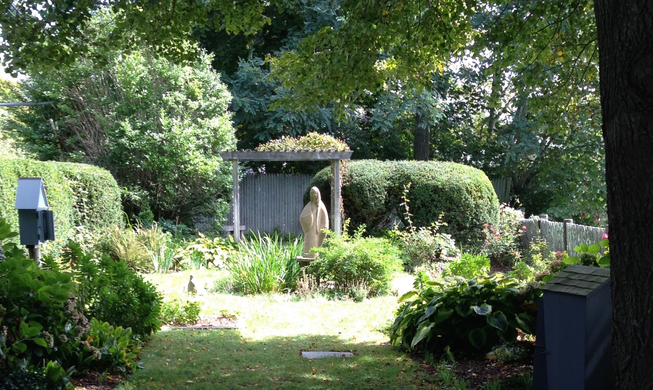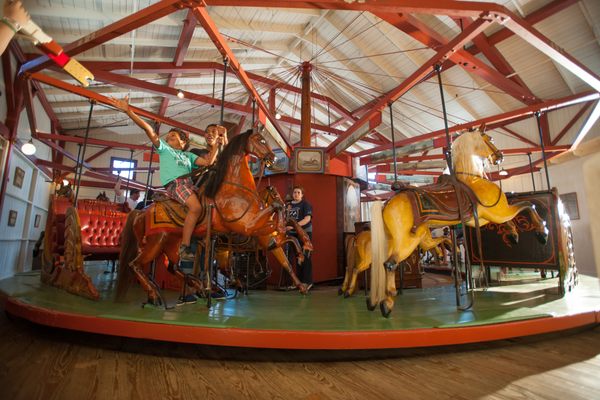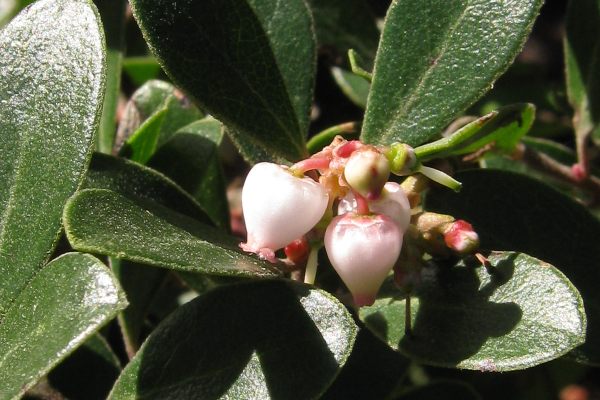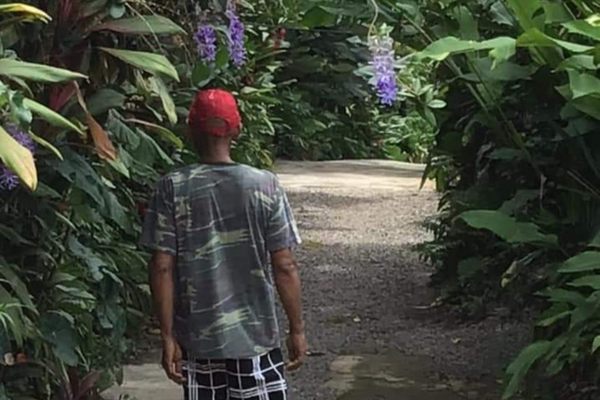The Garden of Our Lady
Marigolds, rosemary, Madonna lilies, and the Virgin’s Bower decorate this Massachusetts sacred garden.
The practice of planting Mary Gardens—devotional gardens featuring flowers whose common or religious names refer to the Virgin Mary—is believed to have begun in medieval Europe (possibly in France under the care of St. Fiacre, patron saint of gardeners), although hard evidence of these gardens emerged only in the 20th century, when the first Mary Garden opened to the American public in Woods Hole, Massachusetts, a Cape Cod town otherwise known for its ocean-science laboratories.
The Garden of Our Lady was a gift to St. Joseph’s Church in 1932 from Frances Crane Lillie, a Chicago native and Woods Hole summer resident, who’d been inspired by certain monastery gardens she’d visited during her travels in England. Her husband, Frank R. Lillie, ran Woods Hole’s two oceanographic institutes at the time: the Marine Biological Laboratory—where they’d met while she studied embryology—and the Woods Hole Oceanographic Institute, which he’d also founded.
Free and open year-round, the waterside garden is marked street-side by a wooden gate (“Please enter and close”), while inside, a quiet and grassy cross-shaped expanse features a statue of the Virgin Mary, several stone benches, and a raised birdhouse-style box whose two small doors open to display the garden’s layout and a list of its 48 plants–among them morning glories (Our Lady’s Mantle), foxglove (Our Lady’s Glove), roses (Her Flower), ground ivy (Where God Has Walked), pansies (Lady’s Delight), periwinkles (Virgin Flower), geraniums (Madonna’s Pins), hollyhocks (Staff-of-St. Joseph), and wild thyme (The Dear Mother’s Love).
Also donated by Mrs. Lillie, in 1929, is the neighboring pink-granite Angelus Bell Tower, whose two bronze bells, named Mendel and Pasteur, ring three times a day as a way, Mrs. Lillie said, “to remind the scientists who study at The Marine Biological Laboratory across the inlet that there is another and valid aspect of life.”

















Follow us on Twitter to get the latest on the world's hidden wonders.
Like us on Facebook to get the latest on the world's hidden wonders.
Follow us on Twitter Like us on Facebook